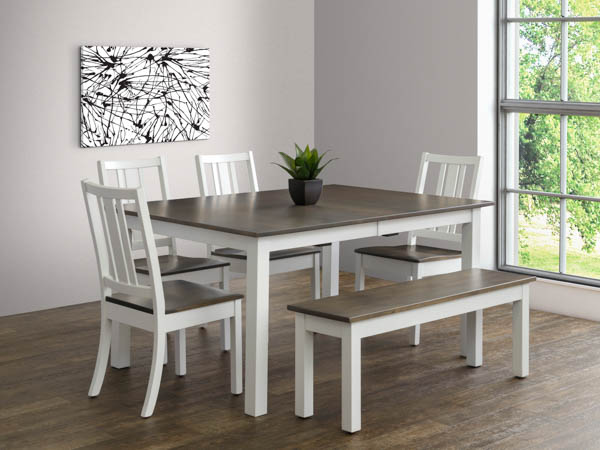Furniture making is literally almost as old as man himself. We take our comfortable easy chairs, stools, sofas, etc. for granted. According to Wikipedia the name itself refers to any movable object intended to support human activities like seating, eating, and sleeping, as well as objects to make our work life easier. Have you ever thought of what it would be like to work in an office with no desk?
Of course, ergonomic concerns have led to a revolution in the work realm, with encouragement coming from health professionals to alternate sitting and standing. But that’s a subject for another article. Today we want to look at the early history of making furniture.
Oldest Known Existing Furniture

This fascinating place called Skara Brae is in Scotland. It holds the oldest known surviving furniture, including cupboards, dressers, and beds all made with stone. This stone-built settlement is thought to have been occupied from roughly 3180 to 2500 BC. You can step back in time by visiting this rebuilt little village and imagine what it would have been like to live in that time.
In those early years, most furniture was made of stone, as were most of the dwellings. This was mostly due to a shortage of wood in the area. According to sofasandsectionals.com dressers, cupboards, and beds were some of the earliest forms of furniture. Supposedly the dresser was the most important piece of furniture since it usually faced the entrance of each house and often displayed carved artwork.
Furniture for the Dead

Ironically the earliest furniture was likely built for the dead rather than the living! As this article on britannica.com shows, there were huge beds found in the tomb of Tutankhamen. These beds were made of wood and had simple framework and woven string to lay on. Also found in the tomb was a bed that folded together, likely for travel.
Of course, Egypt was also known for its ancient, intricately carved wooden furniture, often gilded with gold. The rich were able to afford such furniture, some of which has been discovered in fair condition due to the favorable climate in that area. Much of this type of furniture has also been discovered in the tombs of Pharaohs. However, simpler versions have also been discovered in what were likely homes of ordinary Egyptians.

Furniture in Greek & Roman Times

Although little physical evidence remains of furniture during the Greek and Roman era, we can see a number of images containing furniture from this time in history. It’s thought that most of it was constructed of wood, although evidence suggests these were often fitted with metalwork. Some items such as lampstands (constructed entirely of metal) have survived.
According to history, couches were an important piece of furniture in Roman homes. While we sit upright in chairs to dine, the Romans always used couches for important banquets. Thus it might be safe to say early Romans were the original couch potatoes!


Furniture in the Middle Ages
The middle, or Dark Ages have comparatively little evidence still in existence of the type of furniture that was in existence. It is assumed the style of furniture during this period remained much the same as earlier times. Heavy wooden furniture many times using oak or similar heavy wood was likely the norm. Later in this period and into the 17th and 18th centuries furniture designs began to develop rapidly. Although heavily influenced by French art, there were some pieces that reflected the tastes of a particular region or nation.

By Sailko – Own work, CC BY 3.0
https://commons.wikimedia.org/w/index.php?curid=66376165
Furniture Through the Ages
For the remainder of this article we will focus on different “ages” of furniture design.
As with design themes in other areas of work and art, certain designs and features come and go in cycles. Looking at 100 year periods, a distinct pattern can be seen, with changing features and even different types of wood being used during these chunks of time. We start with the Age of Oak.
The Age of Oak
This refers to the period during the reigns of the British Tudor monarchs. While in general a lot of the characteristics remained in furniture from the Gothic period, the age of oak was typified by massive, sturdy pieces. Four-poster beds were common in this time period.
The Age of Walnut
It is thought that the introduction of walnut may have been due to improvements in wood sawing methods. Thin slices of walnut wood, with its characteristics of contrasting color, became popular during this period between 1600 to 1730.
Mahogany & Satinwood
Mahogany was the dominant wood used for furniture in the middle part of the 18th century. Simple styles and an emphasis on flowing lines throughout were the norm in this period. Toward the end of this period satinwood also became popular.
18th Century Furniture
This is a widely used term that defines many of the pieces of furniture that typified the era. Queen Anne, Georgian, Chippendale etc. are all well-known terms when it comes to describing different types of furniture styles. This was a period described as the “golden age of cabinet makers” and was indicative of a more individualized style of woodworking.
19th Century Furniture
With the industrial revolution in full swing, this was a period of change. Mass production forever changed the art of furniture making. Many replicas were produced during this period, which are seen as cheap spinoffs in the furniture world.
20th Century Furniture
This period has thankfully seen a resurgence in the diversity of craftsmen who truly care about creating quality furniture. While modern 20th century furniture style emphasizes a kind of cold, metal and cushion based product, the prevalence and affordability of modern wood working machinery has produced hundreds, even thousands of unique craftsmen.
Here at Dutch Home Furniture it is our belief that the down home, practical functionality and beauty of handcrafted wood furniture provides character that is unmatched. Whether you choose a modern, contemporary look or prefer a more traditional style, we have what you need. From unique slabwood pieces to living room sets. From barnwood to bedroom suites, cedar chests to kitchen islands. Browse our website, then contact us or come visit us at one of our two sites.

